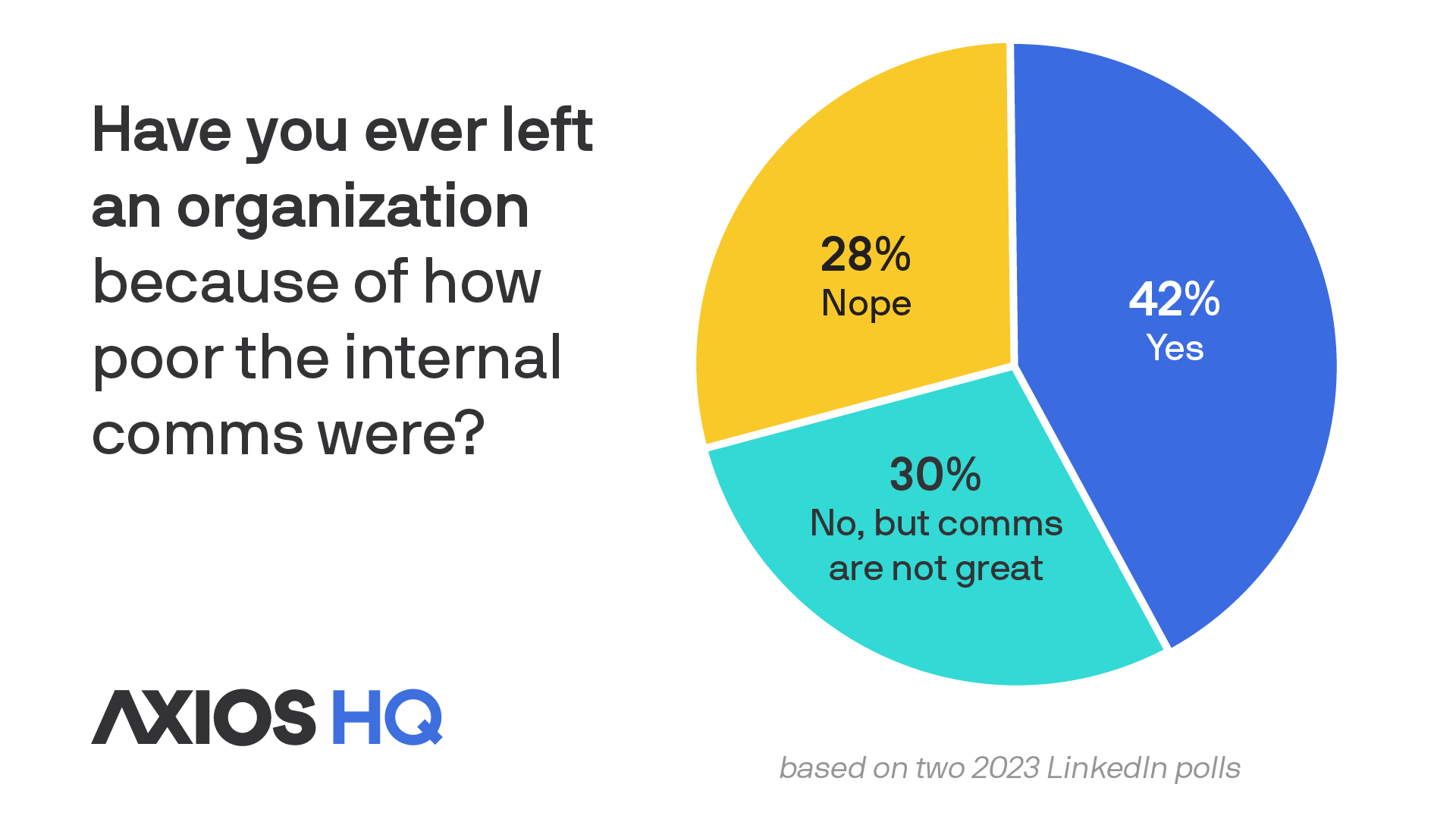Employees are quitting over ineffective workplace communication

Around 60% of employees say the updates they get from their organization’s leaders aren't effective, with some admitting they’ve fully stopped reading some internal communications.
- Why it matters: That’s creating misalignment around key priorities and company goals. Employees don’t know what to focus on, what’s worth their time, and where they should direct their energy — and it’s having an impact on job retention rates.
We ran two polls on LinkedIn, across August and September, to tease out just how much the quality of internal communications has on an employee’s happiness and willingness to stay. Nearly 100 responses gave us a pretty clear picture. The combined results:

Look at that again: 72% have either left a job because communications were bad or admit the place they work now is communicating poorly. While it’s only a small sample of a big workforce, it shows leaders have a long way to go to fix ineffective workplace communication, rebuild trust, fix alignment issues, and increase employee engagement.
How to fix broken internal communications
Getting communications back on track starts with a strong strategy. And while all avenues — like Slack, Zoom, and intranets, need to be part of that strategy — having a single source of truth where employees can always turn when they need critical, actionable direction is key.
Email, which is still the dominant communication channel in most organizations, is often your strongest option, and newsletters, which are the the only communication employees want more of, create a more focused, consistent way to combine important topics into one quality read.
A few communication tips to help along the way:
- Use a consistent cadence. If employees don’t know where to find information or when new updates are arriving, they waste valuable time searching multiple sources. By having a consistent cadence and sending at the best time, leaders can become a trusted source to keep employees engaged around priorities and goals.
- Cut back on the noise. Employees are already overwhelmed on all sides, and yet nearly 60% of employees and managers report receiving updates on the exact same topic at the same time from multiple company sources. Eliminate the inbox stress by combining ad-hoc sends into a single source of truth newsletter that covers what employees need to know to stay informed and aligned while getting the job done.
- Be transparent. Employees are smart. They can tell when you’re hiding something or leaving it out. And doing so will send trust levels plummeting. Treat employees like the adults they are by being transparent and honest with them from the start — even when you don’t have all the answers. It will go a long way in building respect.
- Move information up, down, and around. Use different levels of management to cascade critical information throughout the organization to ensure everyone knows what’s expected of them and what key priorities are.
- Gather feedback. One of the best ways to get employees the information they need is to ask them what they want to hear more of, what they no longer need, and where there are gaps in coverage. That way, they get exactly the updates they need to keep moving.
The bottom line: Preventing employees from jumping ship could be as simple as changing your internal communications strategy. Set yourself — and your employees — up for success, by determining an update strategy that’s straightforward, open to feedback, and focused around getting your message to the stakeholders that need them.
Go deeper: How business communication software will make — or break — your workplace culture





.webp)












.webp)

















